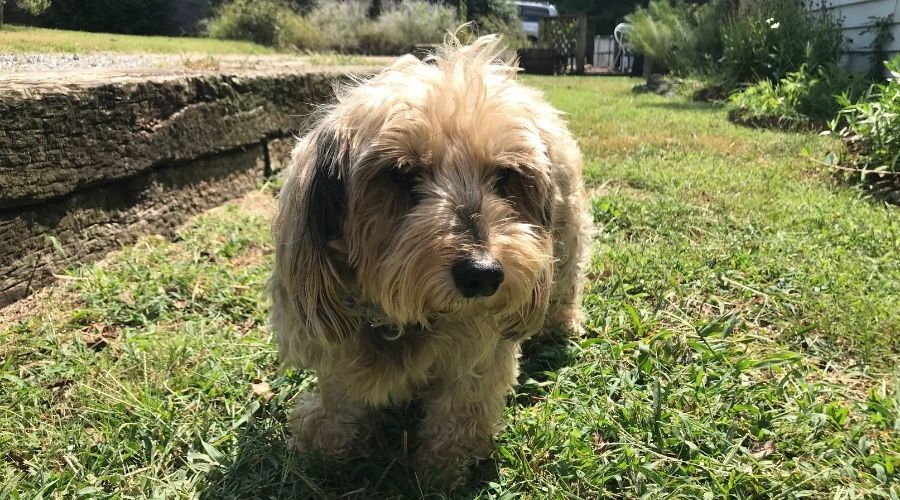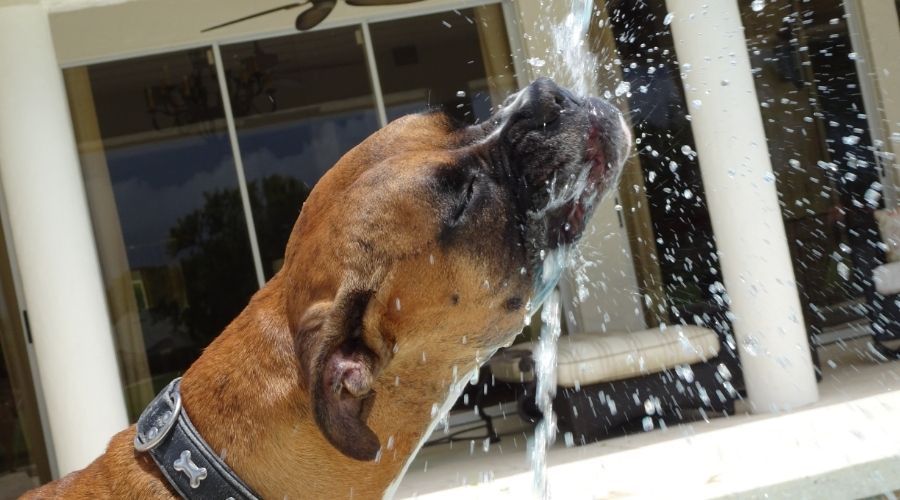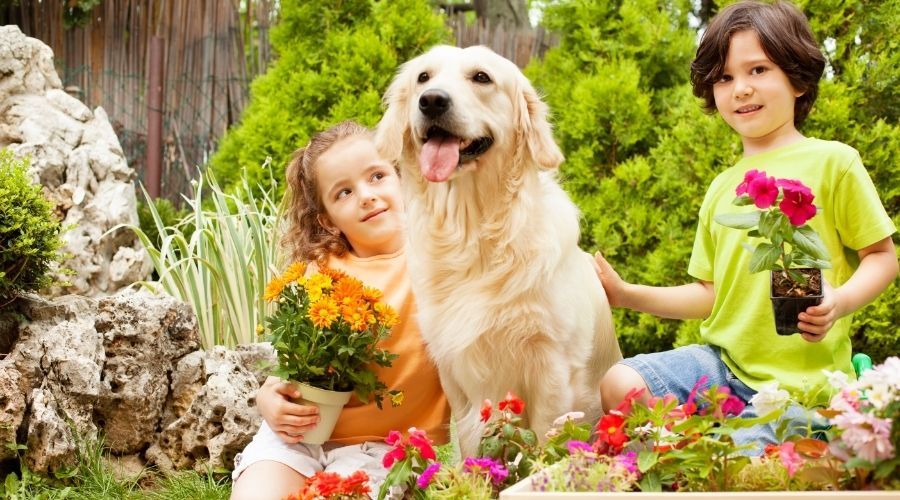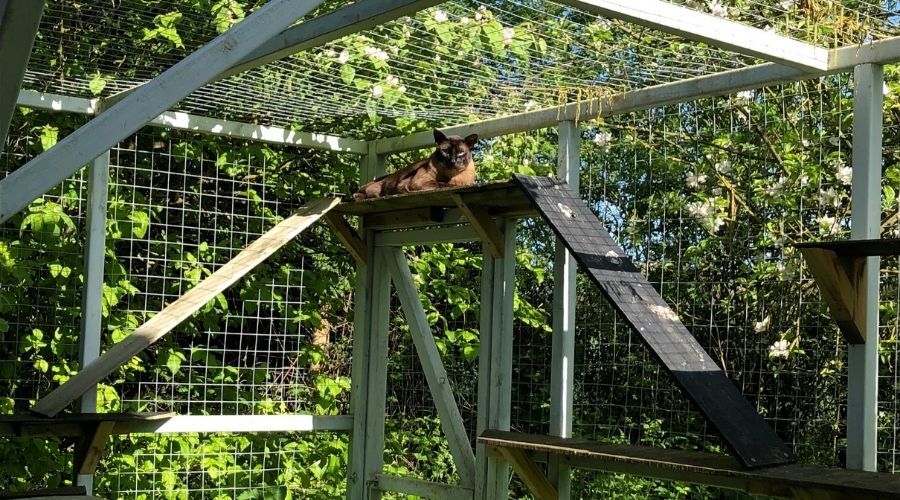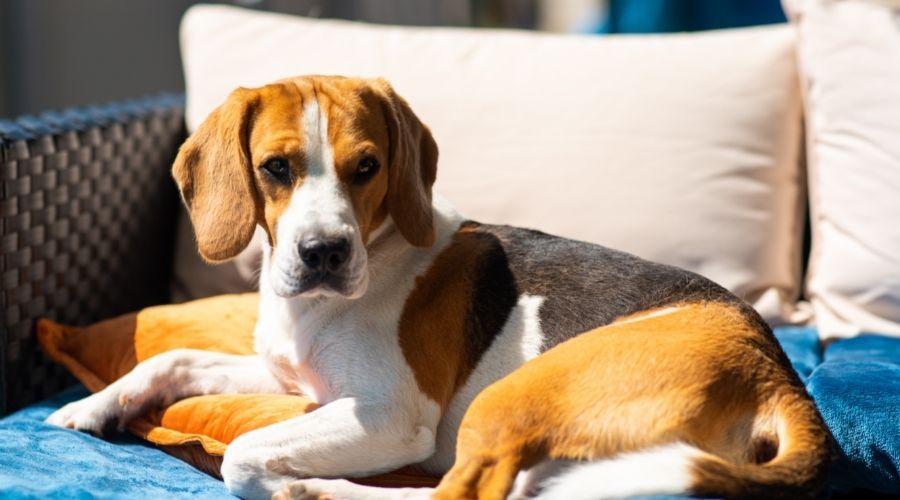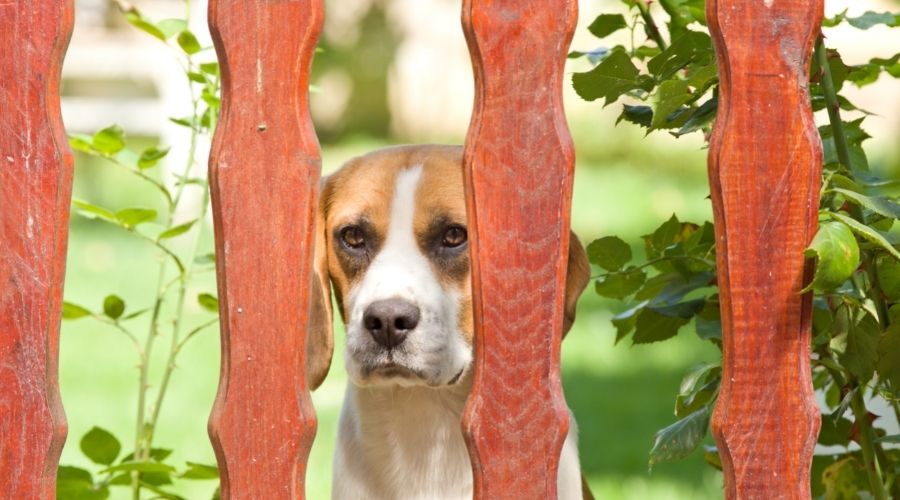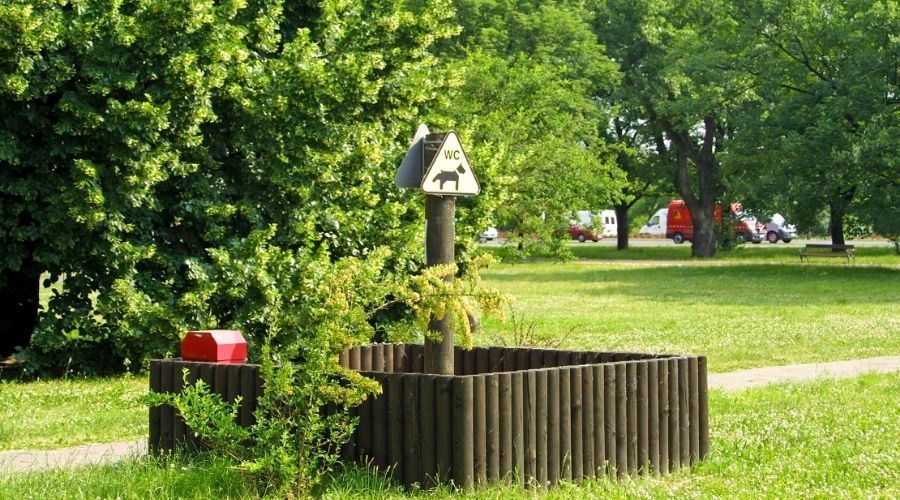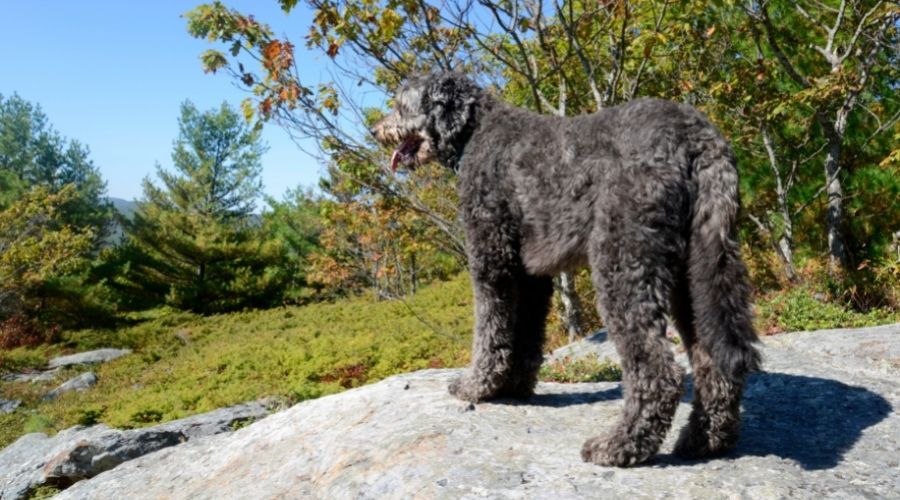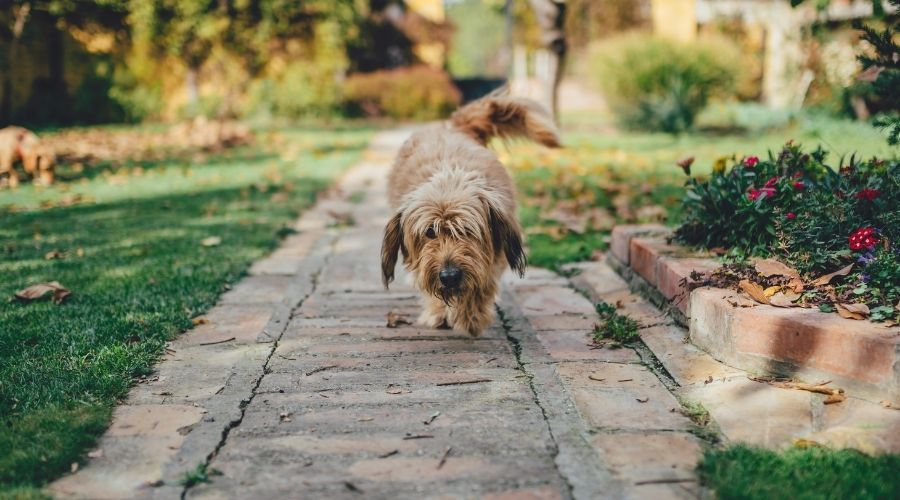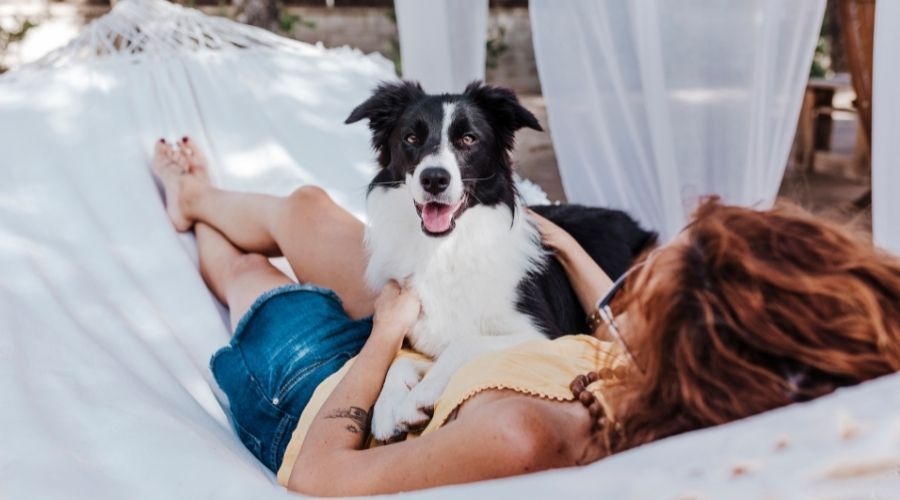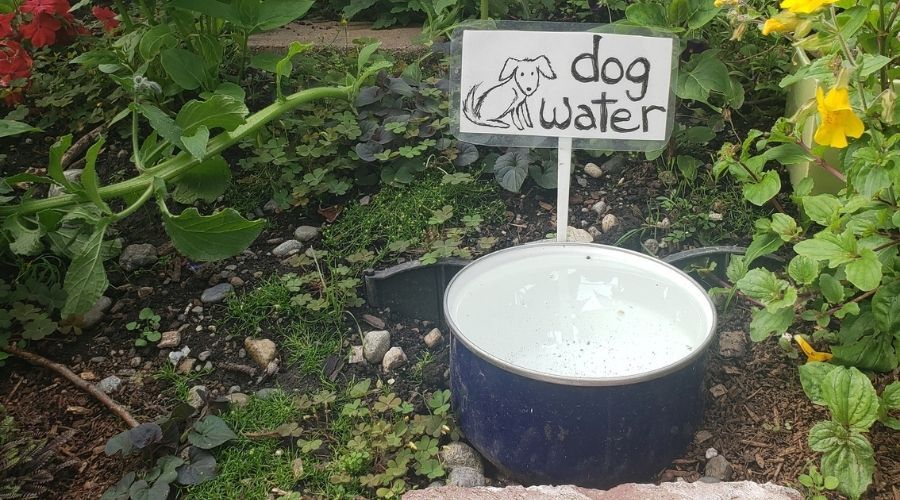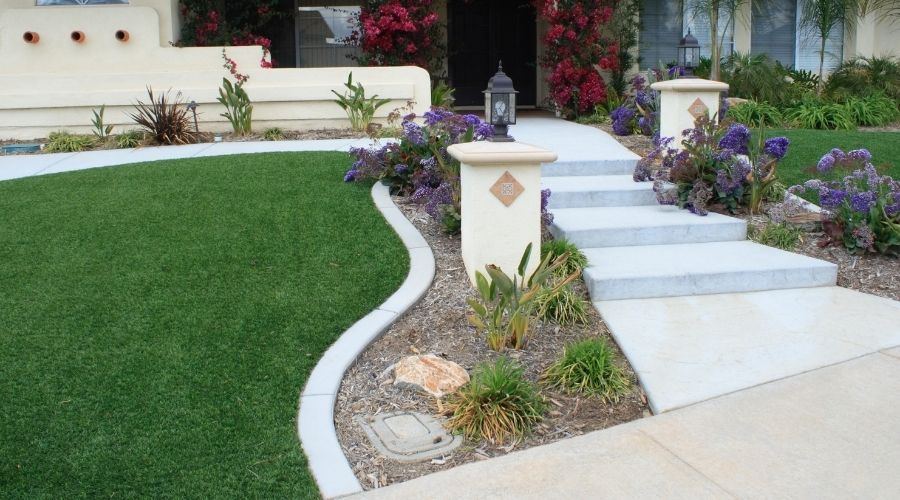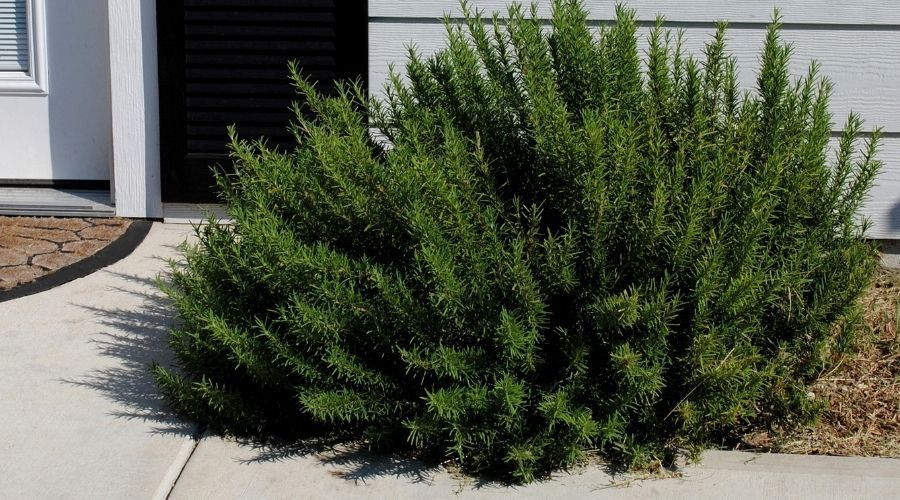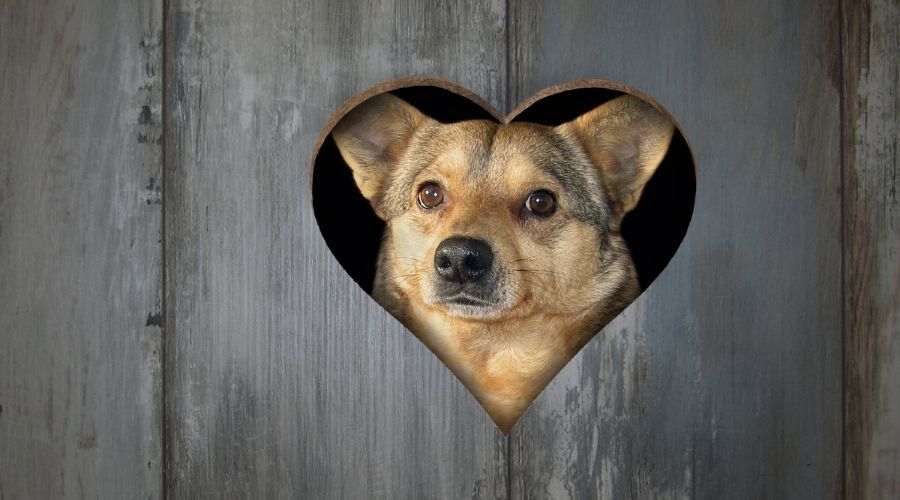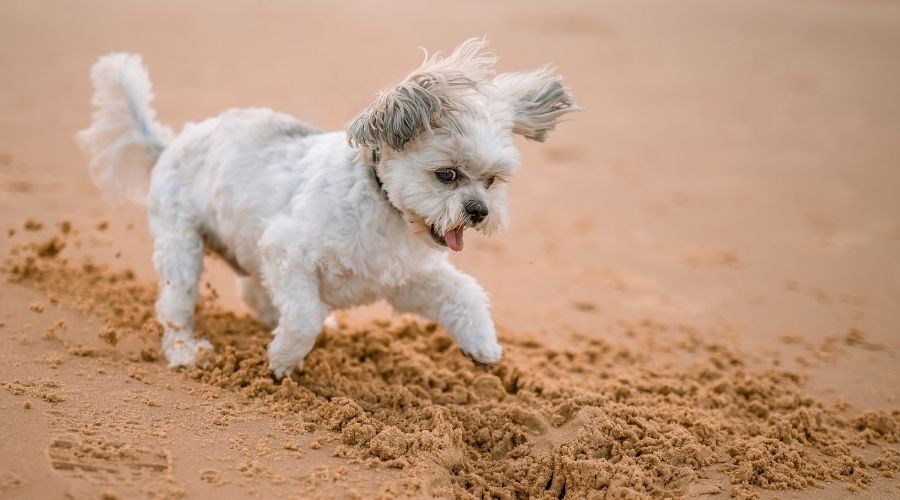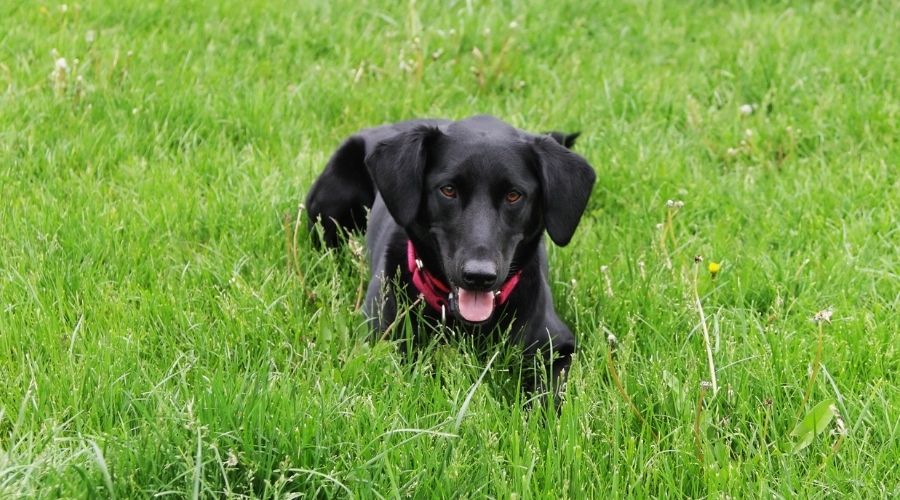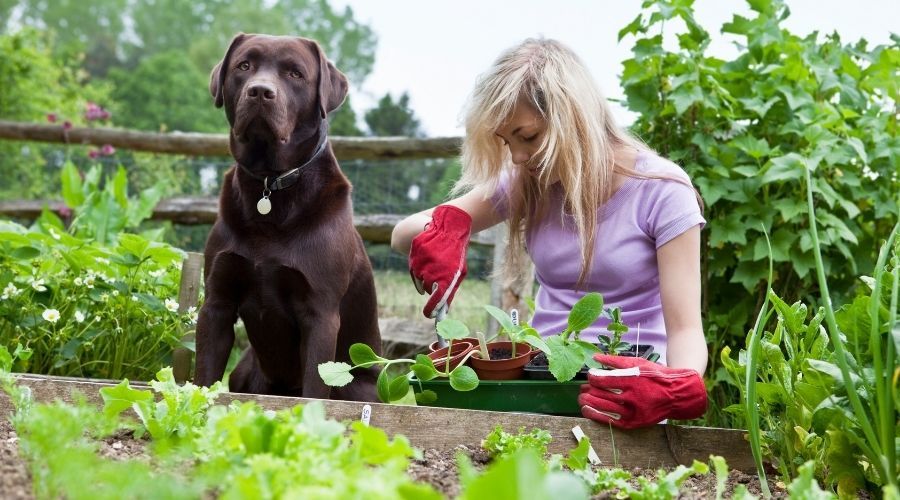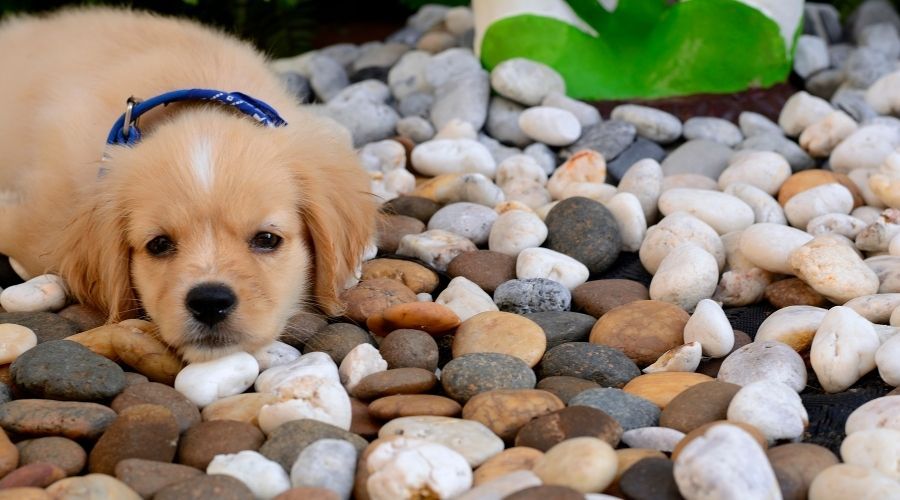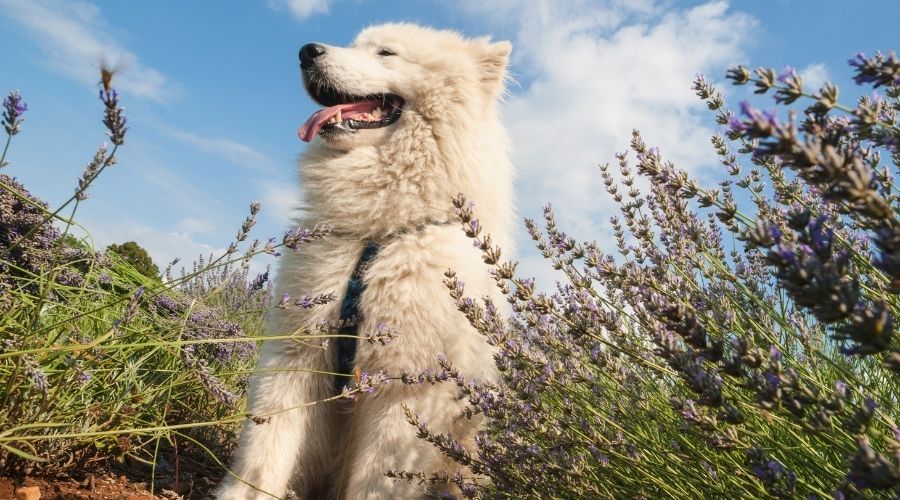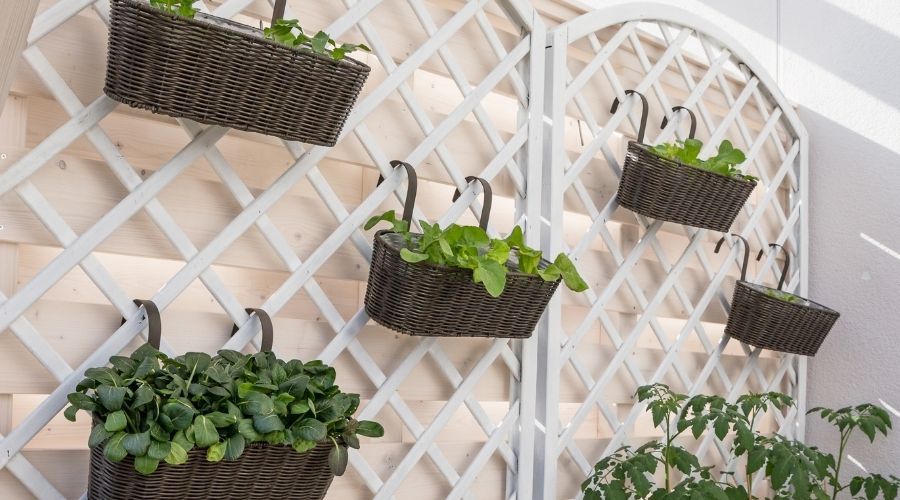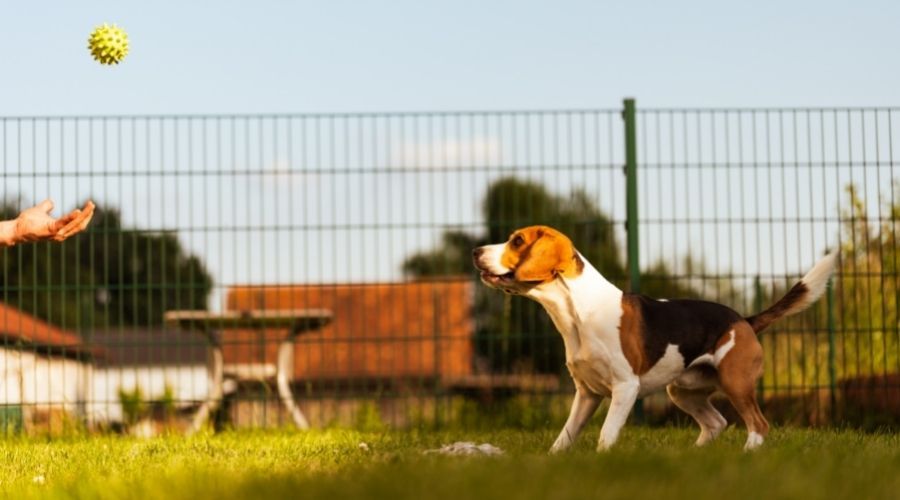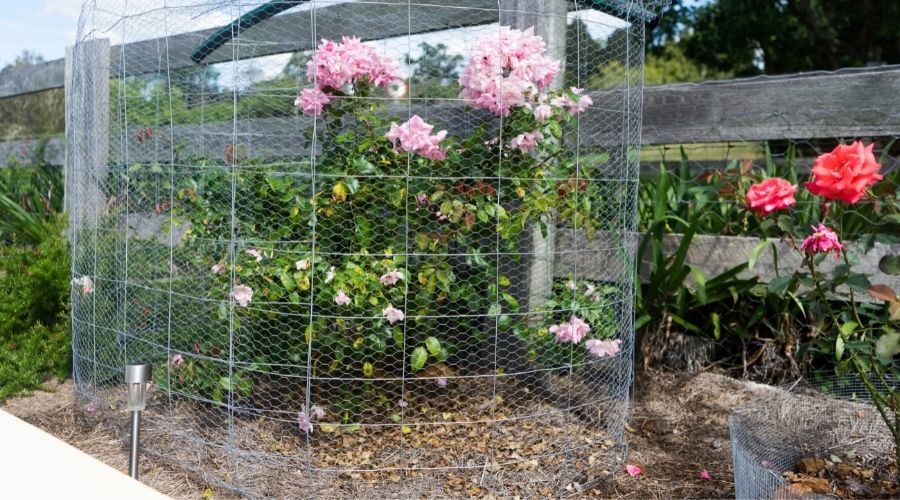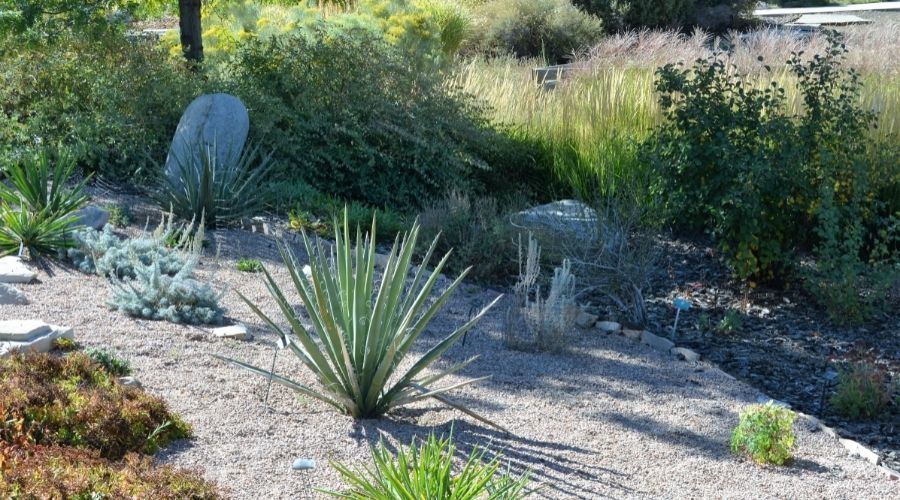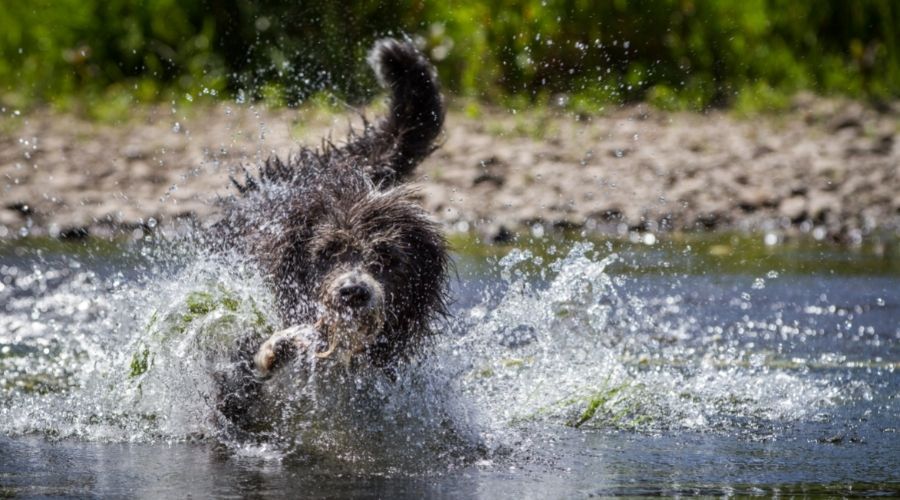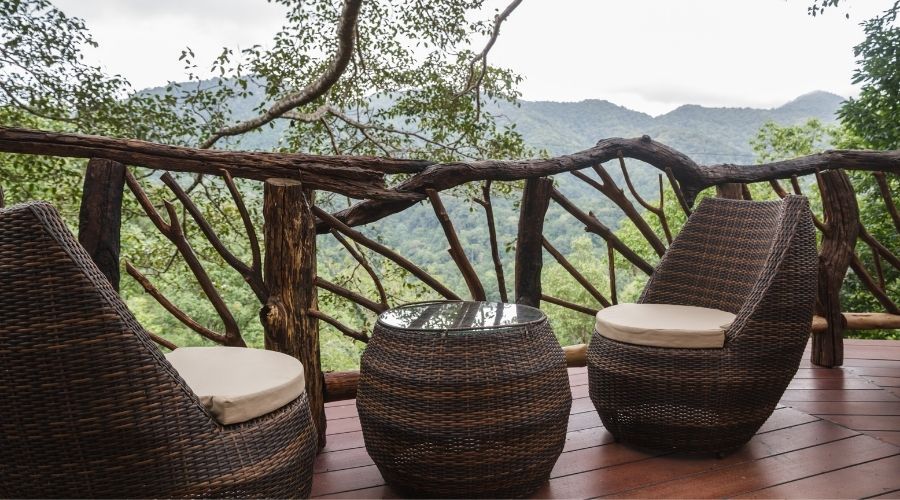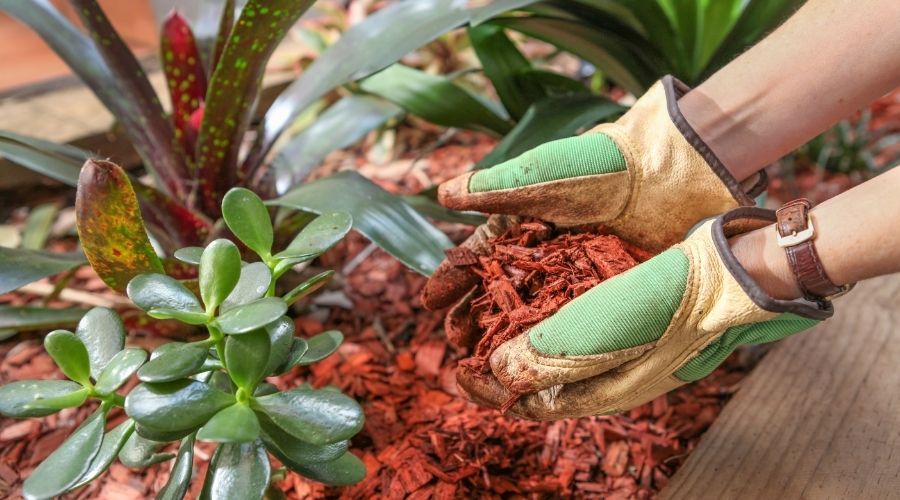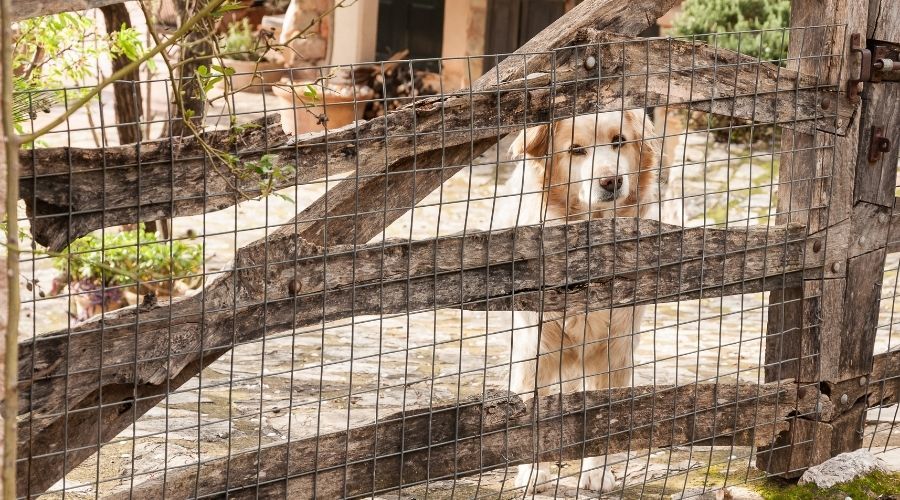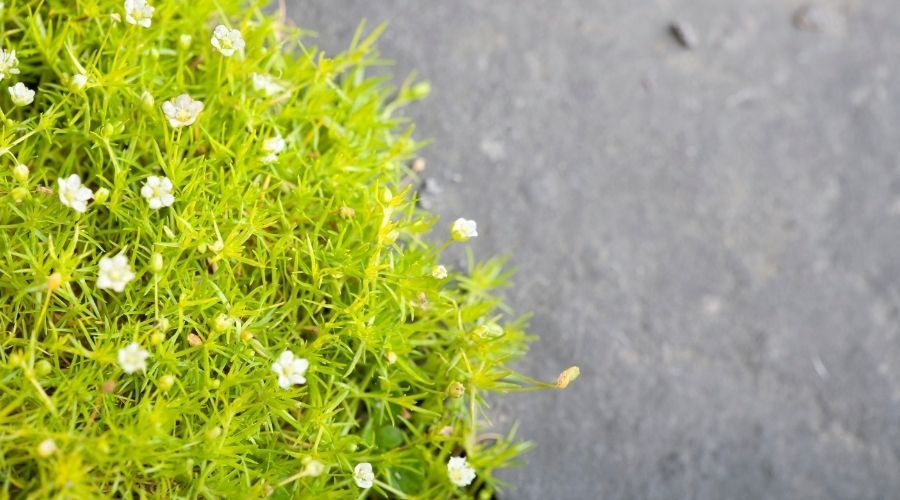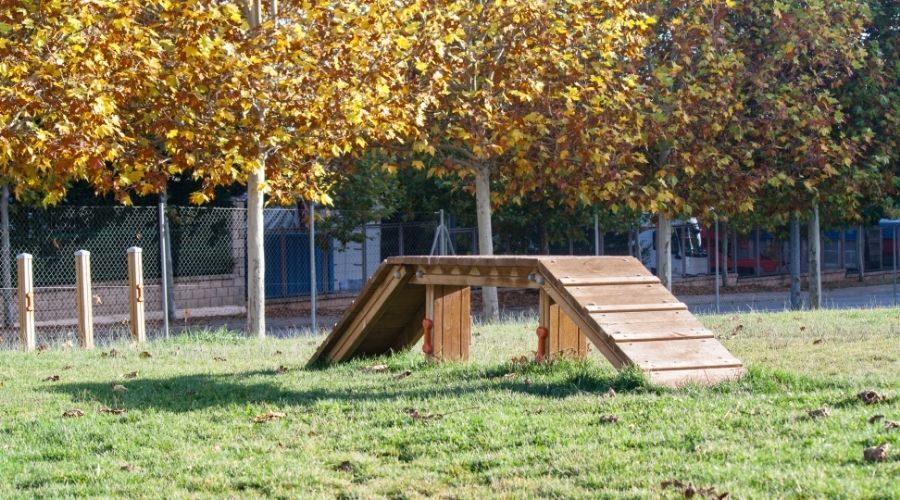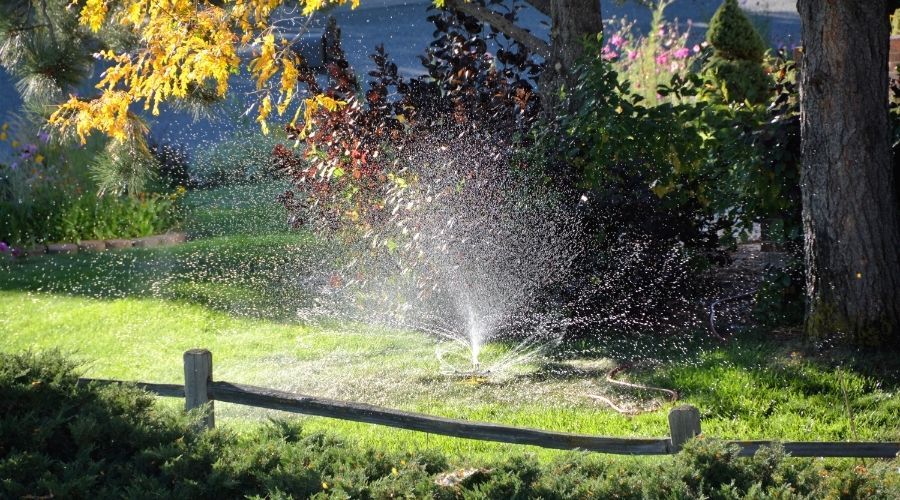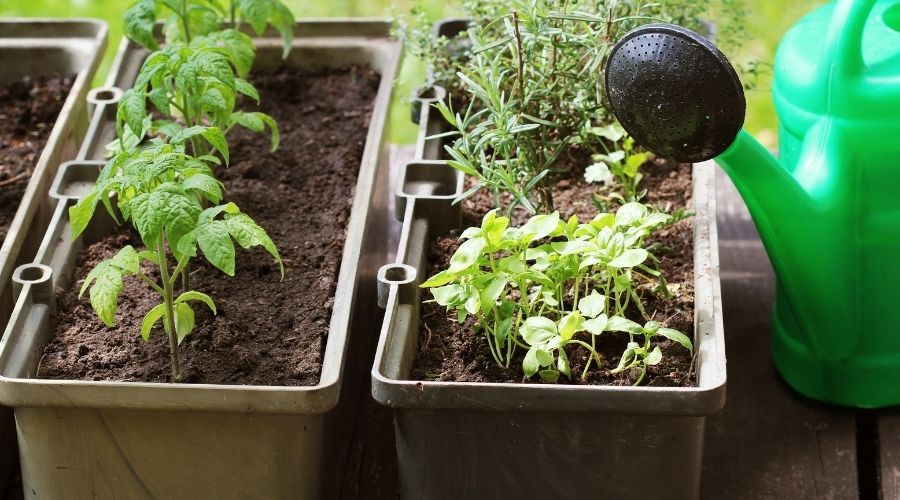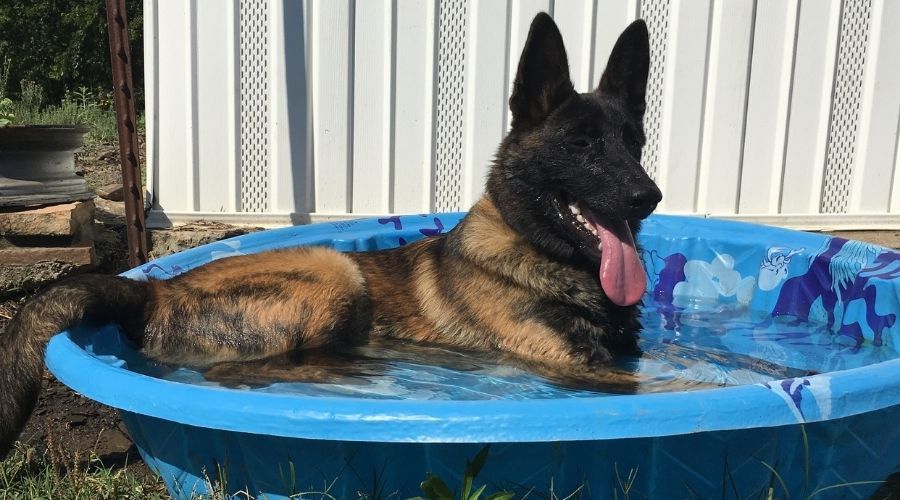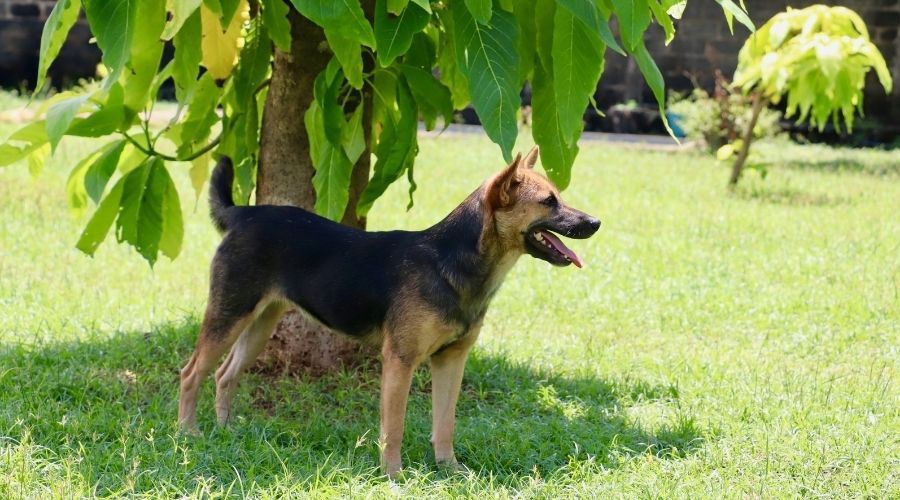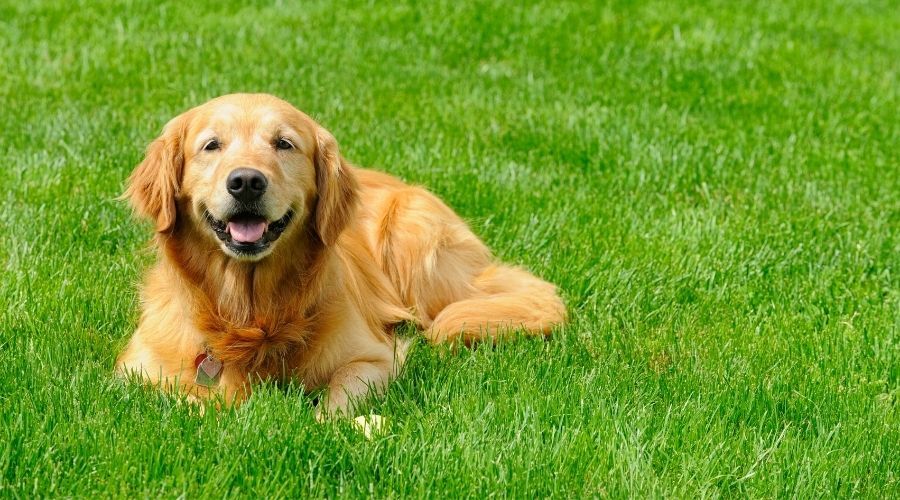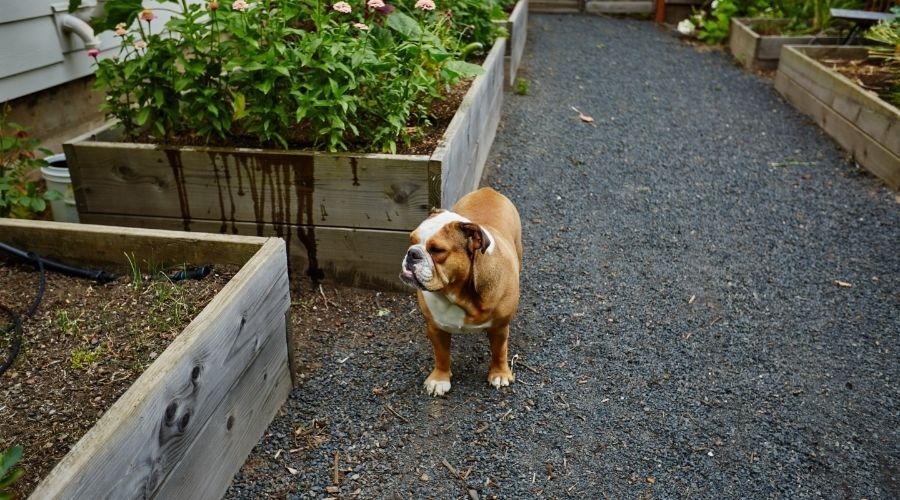As pet owners, we have to occasionally make sacrifices to make our pet's safety a priority. Upon bringing your pet into the house, you secured your pantry to keep your pet away from any toxic foods, swapped household chemicals for pet-friendly varieties, and removed any toxic houseplants from your home. But the process of puppy-proofing or kitty-proofing your house isn't restricted to just indoors. If you plan on bringing your pet idea, you may be on the search for some aesthetically-pleasing pet-friendly landscaping ideas.
The good news is that you don't have to sacrifice the stylish yard of your dreams. There are many great options for landscaping that are not only pet-safe but even functionally incorporate your pet. Also known as Petscaping, landscaping with your pet in mind is gaining popularity, and the options are endless!
Here are 35 pet-friendly landscaping ideas for any style or size of outdoor space.
Install a Filtered Water Feature
Image Credit: Jaimie Tuchman on Canva
During the hot summer months, your dog will be on the search for fresh, cool water when spending time outside. They often drink from any water source they find on the property, which can be frustrating for some homeowners when setting up water features.
Rather than fighting this, why not embrace that your dog needs a water source and install a filtered water feature that is safe for your dog to use as a water fountain. It means that it will need to pool the water somewhere that’s accessible to your dog, and it shouldn’t incorporate any chemicals.
Garden with Pet-Friendly Plants
Image Credit: vgajic on Canva
If you love flower gardening, having a pet shouldn’t stop you from embracing it fully. The one change you will want to make is to be even more intentional about which flowers and plants you are planting.
When planning out your garden, take the time to review the ASPCA Toxic and Non-Toxic Plants List to ensure that any choices you make aren’t dangerous for your pet. While you can, and should, train your pet to leave the plants alone, it’s always better to be safe than sorry!
Incorporate a Catio Space
Image Credit: ahloch on Canva
A catio is an outdoor enclosure built to offer your cat the experience of being outdoors among birds and other wildlife while keeping them safely contained. These structures are built close to the house to allow the cat to come and go as desired.
They also offer enrichment by providing a new and exciting place for your cat to play. It can include not only a caged-off area outdoors but also ledges, bridges, ramps, and any other cat-friendly structures. Don't forget to add a water dish with fresh water.
Add a Built-In Dog Bed for Rest Time
Image Credit: przemyslawiciak on Canva
Just as you want to relax outside, so too does your dog. While Fido could kick back and relax in the grass, as many dogs do, why not include a specialized nap area for your pup in your landscaping plans.
Set up a standard dog bed on your porch as part of your patio furniture or, better yet, build in a dog bed area designed to hold your dog and offer shade during the hottest temperatures. There are some great portable dog bed options or build your dog bed in as a permanent fixture in your patio space.
Install a Decorative but Functional Fence
Image Credit: Jevtic on Canva
Adding a dog fence to your yard doesn’t have to be an eyesore. There are many fun and decorative dog fence ideas that will keep your pup contained while helping to add to the overall aesthetic in your outdoor space. Look closely at the fence style that you love most and consider how you can make it work for both you and your dog.
For example, if you love a wood picket fence display, can you put the posts together close enough to prevent your dog from getting through? With a little careful planning, you can build a fence that both contain your dogs effectively and fits your home décor.
Build a Dog Toileting Area
Image Credit: katatonia82 on Canva
Rather than allowing your dog to go to the bathroom anywhere that he desires in your yard, you can specify a designated ‘potty’ area that will help you to keep the mess contained. It is a great way to protect your yard from urine burn and prevent visitors from accidentally stepping in something they shouldn’t.
Add some intrigue for your pet by installing a functional and decorative fire hydrant pee post, especially for male dogs. Don’t want to see the mess between cleanings? Put up a simple fence around your doggy bathroom. Out of sight, out of mind – until clean-up time!
Add Large Rocks for Exploring
Image Credit: CynthiaAnnF on Canva
Add some interest and dimension to your outdoor space while providing your dog with an opportunity to explore by adding some large rocks and boulders to your property. Your pup will enjoy having a new vantage point to watch over the yard while perched on top of their new throne.
During the colder months, the stone will absorb heat from the sun’s rays and create a warm place for your dog to relax. It is most effective if you opt for a darker-colored rock.
Create a Decorative Dog Path
Image Credit: Kerkez on Canva
Does your dog have a ‘go-to’ path for moving around your yard? If so, you may have noticed that he has worn down the grass along this regularly traveled route, which can be a bit of an eyesore.
Rather than trying to regrow grass somewhere where it’s sure to be trampled once again, try building a dog-friendly path along this route using pavers, bricks, or flat stones that will be easy on his paws.
Add a Pet-Friendly Hammock
Image Credit: evablancophotos on Canva
There are few activities as relaxing as kicking back in a hammock, soaking up the sun, and taking in the fresh air. When selecting a hammock for your yard, choose an option that will work for both you and your dog. It includes considering the material of your hammock and the size needed.
For those with a small dog, a single hammock may be sufficient, however, if you have a larger pup, you may be better suited to a double hammock. Avoid rope-style hammocks with a lot of holes that your dog’s paws could slip through unless you add a hammock pad on top to create a secure surface.
Incorporate Decorative Water Dishes
Image Credit: Kaela Lavin on Canva
You can’t create a pet-friendly outdoor space without considering the importance of freshwater. However, you don’t have to make a sacrifice to the overall aesthetic of your yard just to include a functional dish. Instead, make your dog’s water dish a decorative element. There are many ways that you can accomplish this.
Consider choosing a boldly colored dish or one that features a unique design. Pay attention to how easy it will be to fill and clean your dish to make it easier for yourself moving forward. If you prefer a basic stainless steel dog dish, try placing your dog’s dish inside an urn-style planter to elevate the appearance.
Swap Out Traditional Grass for a Pet-Friendly Synthetic Turf
Image Credit: AvailableLight on Canva
Artificial turf in place of standard grass has been growing in popularity due to the ease of care. Imagine having a green, lush lawn without the concern for watering or the wear and tear from foot traffic. However, this is also a great pet-friendly substitution.
Artificial turf will stand up well to the abuse of puppy playtime, as it prevents digging and is easy to clean. Your yard will be free from discoloration from urine burn, and all you have to do is hose it down occasionally to keep it looking clean and bright.
Discourage Garden Digging by Planting Rosemary
Image Credit: Kathy Byrd on Canva
Most dogs enjoy the act of digging, especially if there’s a patch of dirt to entice them. Unfortunately for us, a garden often falls into a category of a tempting place for your dog to play. One way to discourage your dog from destroying your garden space is by planting rosemary.
While rosemary is completely safe for pets, most dogs dislike the smell of it. Therefore, they are less likely to dog in and around it. It isn’t a guaranteed plan, but it’s worth a try! Better still, rosemary will act as a flea-repellent, helping to keep your yard free from the little pests.
Create Borders to Protect Garden Areas
Image Credit: JanJBrand on Canva
If the rosemary isn’t enough to prevent your dog from tearing your garden up, you may need to consider installing a physical border to keep them out. There are many different options to suit any style or décor, including stone barriers, rusting wooden logs, a short picket fence, cement block barriers, and more.
The key is to find a solution that will keep your dog out, complement your outdoor décor and still allow access to the garden space when needed so that you can care for your plants. If your dog is very determined to get in, you might need to install a taller fence and incorporate a gate for your use.
Add a Viewing Bubble or Dog Window to Your Fence
Image Credit: iridi on Canva
While some dogs generally need the barrier created by a privacy fence, eliminating the temptation to bark at every passerby, this isn’t the case for every dog. Some pups are super friendly and would love nothing more than to watch the world around them.
If this sounds like your dog, you could install a window or acrylic viewing dome in your fence specifically for your pup. It is a great way to treat your dog with an unobstructed view while still making sure that everyone is safely contained.
Install a Sandbox for Digging
Image Credit: Natalie Maro on Canva
Rather than trying to stop your dog from digging, why not create a safe space where they can dig to their heart’s content? It’s a great way to address the problem while still allowing your dog to be a dog. Frame out your sandbox using a wooden frame or even a plastic puppy pool before filling it up with sand.
Keep in mind that this isn’t going to be a quick fix. You will have to train your dog to dig only in that one location by continually redirecting your pups there any time they start digging outside of the designated area. In time, your pups will learn that this is their space.
Consider an Invisible Fence to Avoid Blocking Your Views
Image Credit: Willowpix on Canva
We’ve talked about the use of fences a few times on this list, but not every homeowner wants to have their view of the outside world obstructed. One great way to embrace the views that may have been a selling point in your home, to begin with, is to incorporate an invisible fence into your landscaping plans.
Incorporate the marker flags for training in a way that your dog can easily see them, but they aren’t taking away too much from your landscaping efforts.
Create a Pet-Friendly Snack Garden
Image Credit: cjp on Canva
A vegetable garden is a fun way to turn your backyard into a functional space while promoting a healthier lifestyle. However, this doesn’t need to be restricted just to growing vegetables for the human members of your family. Try incorporating some dog-friendly snack options in your growth plans.
You can grow veggies for your pups in a protected garden space, allowing them to enjoy their treats only when you choose to give them one, or even set up a specific doggy garden that they can munch on if they desire. Just be cautious when selecting plants, as some vegetables are safe for your dog while other parts of the plant are toxic.
Cover Potty Areas with Smooth Stones
Image Credit: inspire-of-mine on Canva
If your dog has been trained to go to the bathroom solely in one area of the yard, you may want to eliminate the use of grass in the area. Instead, consider using small stones that would be destroyed from the pH level in your dog’s urine.
If you are going this route, stick with smooth stones that are easy on your pup’s paw pads. You also want to avoid using super small gravel as it can get stuck between your dog’s toes, causing discomfort.
Plant Flea-Repelling Plants
Image Credit: helovi on Canva
We mentioned above when discussing rosemary that it has flea-repelling properties, but rosemary isn’t the only plant that can keep your property pest-free. Some other options that will help to repel fleas and prevent a frustrating investigation are marigolds, sage, and catnip. These plants are all non-toxic to dogs, meaning that they are safe for your pup even if he feels like giving it a nibble.
Another flea repelling plant that you can include is lavender, however, if your dog is a nibbler, it is better to be avoided. Lavender contains a compound called linalool in small amounts, which is toxic. It would, however, take your dog eating a lot of lavender before problems would arise.
Install Vertical Gardens and Planters
Image Credit: Kamadie on Canva
Are there plants that you would like to grow that aren’t necessarily safe to have at ground level where your dog can have access? One way that you can accomplish this without sacrificing the safety of your dog is to install a vertical garden.
If you want to plant a toxic plant, stick to the highest planter boxes in your vertical garden so that they are up and out of your dog’s reach. This is also a great option for those who have a dog that eats everything that just wants to keep ANY plant without worrying about it being destroyed.
Assign a Designated Dog Play Zone
Image Credit: przemyslawiciak on Canva
One of the biggest causes of destruction to a well-cared for and well-manicured lawn is the constant abuse that they take being trampled during puppy playtime. It’s not that your dog is doing anything wrong in those moments, it is just running around and playing, but a typical yard wasn’t designed for that level of activity.
You can take steps to reduce the running on your lawn, but that requires limiting your dog’s ability to play in their yard, which isn’t something that many dog owners want to do. Instead, designate one area of the yard as your dog’s ‘play zone’, accepting that it is likely going to do a number on the ground in that area. You can install a dog run in this space, fence it off, or train your dog to recognize that is where he is supposed to go for playtime.
Install Wire Cages Around Plants, Bushes, and Trees for Protection
Image Credit: Elise Hay on Canva
Another option for growing the plants you want most in your yard without worrying about your dog damaging them by digging around them, trampling them, or chewing on them, is to install a chicken wire cage around the plant as a safety barrier.
It works for everything from delicate rose bushes to trees, and shrubs that you would prefer are not used as a toilet post. Chicken wire is thin, allowing you to see and enjoy your plants while keeping them safe. It is especially important for those with young puppies who may not know what they can or can’t get into yet.
Embrace Xeriscape Landscaping
Image Credit: JRLPhotographer on Canva
The plants that are used for xeriscaping are often incredibly hardy plants, capable of thriving in harsh conditions where access to freshwater may be limited. While that doesn't have a direct impact on whether they are pet-friendly, it means they are less likely to be killed off from the abuse pets put them through.
By planting your garden with the use of a pet-friendly mulch like rocks and stones, you increase the likelihood that your hard work will stand up over time.
Add a Pond for Swimming and Playing
Image Credit: buchsammy on Canva
During the hot summer months, few activities feel as refreshing as swimming. You can provide your dog with this opportunity by incorporating a pond into your yard. To keep your dog safe, you will want to ensure that you use adequate filtration to keep any harmful algae at bay.
Depending on the size of your pond, you may also want to skip adding pond fish unless they have enough space to get away from the dog during swim time to a quieter, less stressful area in the pond.
Fence Off a ‘People Only Space’ While Your Dog Runs Free
Image Credit: suksao999 on Canva
When discussing the use of fencing with dogs, we often focus on the containment of our pups to a designated area of the property. But what if you wanted to designate one area just for you and your human guests as a dog-free seating area. It can easily be accomplished by installing a fence with a gate around your patio or seating space.
Your dog will still enjoy the opportunity to run the rest of the yard and ‘be a dog’ while you can relax, knowing your guests are comfortable even if they are afraid of dogs or reluctant to be too close to them.
Incorporate Cedar Mulch as a Natural Flea and Tick Repellent
Image Credit: OzCameraman on Canva
Another great substitute for uncomfortable gravel or easily damaged grass is to use cedar mulch in your garden or along walkways. Not only does this create a soft surface that's easy on little puppy paws, but cedar is known for having insect repellent properties.
Having cedar around your yard will keep the fleas at bay, plus it creates a barrier that ticks will refuse to cross, limiting their access to your space. If you live somewhere with a field or natural area along one side of your property, consider installing a pest barrier by adding a row of cedar mulch to divide the spaces.
Leave a Prowl-Friendly Perimeter
Image Credit: Mariamarmar on Canva
Dating back to their wild ancestors, dogs have a natural desire to protect their space and the ‘pack’ they are a part of. If you watch your dog moving about in his yard, you will likely notice that he tends to prowl along the fence line to ensure that no one unwanted will enter his territory.
Knowing this, dog owners can avoid a lot of frustration and unnecessary destruction by keeping this perimeter clear and open for the dog to move freely. If you want to take it further, consider installing stones or mulch along this path to withstand the repeated foot (or paw) traffic.
Consider Irish Moss or Creeping Thyme in Place of Grass
Image Credit: ChristopherBernard on Canva
Are you looking for a natural green surface for your yard without dealing with the fragile nature of traditional grass? If yes, then why not cover your yard with something hardy and decorative like Irish moss? Not only is Irish moss safe for your dog, even if he chooses to make it a snack, but it’s also a healthy snack.
Irish moss contains high levels of fiber, vitamin K, calcium, copper, and other important nutrients and is often used to soothe gastrointestinal upset and help with respiratory problems.
Build a Dog Agility Course
Image Credit: Mendbil on Canva
Dog agility is a great way to help wear out a high-energy dog while also providing you with a great opportunity to bond as dog and owner, working together as a team. There are many places that you can go to access dog agility equipment and work with professionals on training your dog, but you can also set up a small agility course at home if you have the yard space.
The course can be as natural and rustic or as bright and colorful as you wish, allowing it to complement any style or existing outdoor décor. Plus, it will encourage you and your dog to be physically active, helping to improve your health and well-being.
Incorporate a Sprinkler System to Help Prevent Urine Burn
Image Credit: JRLPhotographer on Canva
Lawn burn or urine burn refers to the patches of dead grass that are often left after a dog has used a portion of your grass-covered yard as a toileting area. It is because a dog’s urine contains an excessive amount of both nitrogen and salts.
One simple way to manage and prevent this damage is to install a sprinkler system to water down and wash away the dog's urine before it can do too much damage. It’s not a foolproof solution, but it can help considerably.
Try Your Hand at Container Gardening
Image Credit: virginijavaidakaviciene on Canva
The process of container gardening refers to growing your plants in pots, grow bags, and planters instead of planting them in the ground in a more traditional garden setting. This technique allows those in apartments and other urban settings to set up a garden without having a large yard to install a garden bed.
For dog owners, container gardening offers the unique ability to move plants if needed throughout the season. If you notice that your dog is getting into a plant where you had it set up, move it somewhere out of his reach.
Install a Puppy Pool
Image Credit: Tamara Harding on Canva
If you aren’t interested in installing a pond in your yard but still want to allow your dog to enjoy a refreshing swim, incorporate a puppy pool into your landscaping plans. You can build the pool into a porch or other area as a permanent installation or leave room to set it up when it’s time for a pool day.
Another fun alternative that you may consider including for dogs that would benefit from the refreshing, cool water but aren’t necessarily interested in swimming is a sprinkler pad.
Create Shady Spots with Trees and Taller Bushes
Image Credit: Look4What on Canva
Another priority for your dog’s safety on a hot summer day is the need for shady areas where he can relax and stay cool. While you can build shaded structures like dog houses and patio areas, a great way to incorporate shade while focusing on your landscaping is to use trees and larger bushes.
If you plan on relaxing outdoors with your dog this summer, consider setting up a seating area where you can both enjoy your time together comfortably.
Choose a Hardy Grass Variety
Image Credit: cmannphoto on Canva
While there is no such thing as a ‘dog-proof’ grass, there are some varieties that are better adapted to handling the abuse of constant treading and play from your pup. Some examples of hardy grasses include Bermuda grass, Zoysia grass, Centipede Grass, Buffalo Grass, Kentucky Bluegrass, St. Augustine, and Tall Fescue.
These grass varieties aren’t guaranteed that there are no grass options! However, the recommended options are better suited for lawn burn from urine, trampling during play, and more.
Build Raised Garden Beds
Image Credit: tripelem on Canva
For gardeners that would like to continue a larger-scale gardening project while keeping their dogs out, you may be interested in installing raised garden beds in your yard. These larger structures lift the garden bed up and out of the reach of your pup while still offering the space that most gardeners prefer in a standard garden bed.
They are available in different sizes, styles, and materials, including cedar, galvanized steel, wicker, and durable plastics.
Incorporate Your Pet into Your Landscaping Plans
Whether you share your home (and your heart) with a high-energy puppy, a relaxed and laid-back senior dog, or an adventure cat, there are many ways that you can accommodate your pet in your backyard landscaping plans.
Not only does this mean removing potential risks and preventing unnecessary damage, but also enhances your pet’s life with play areas, areas to relax, and other perks. After all, they are part of the family too!

